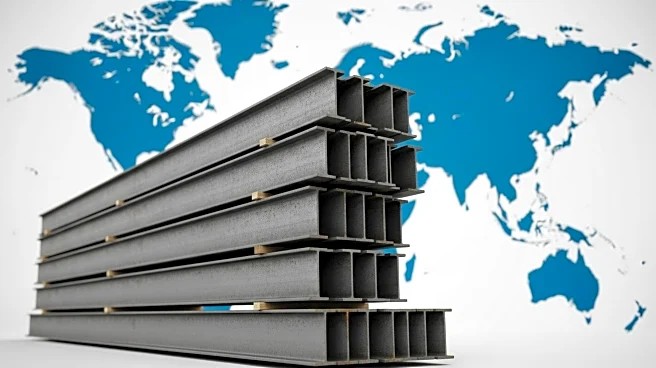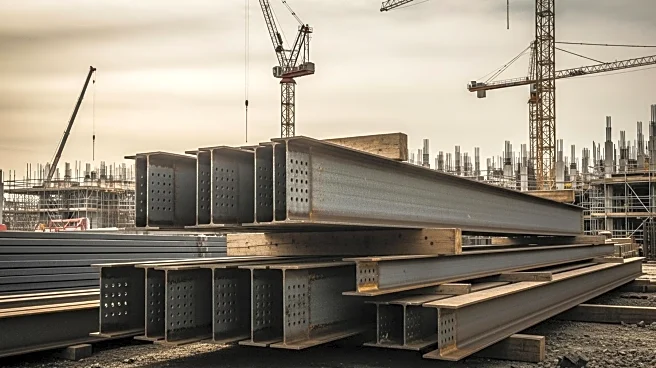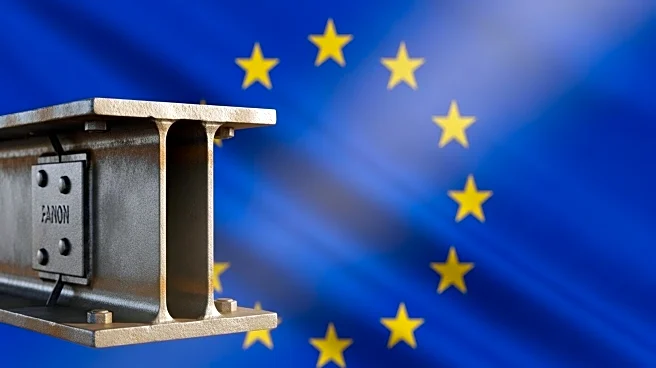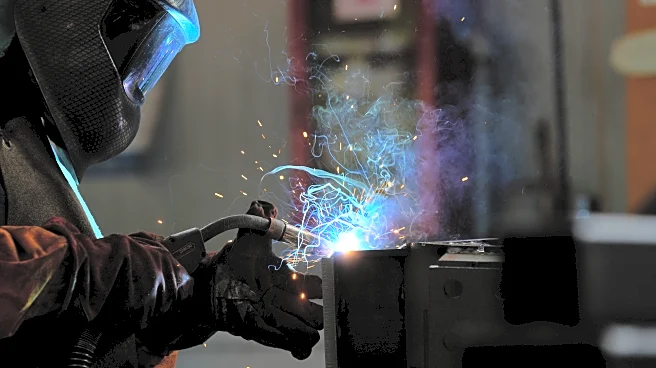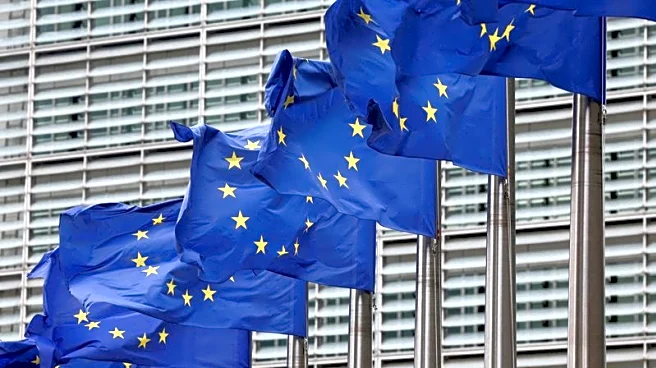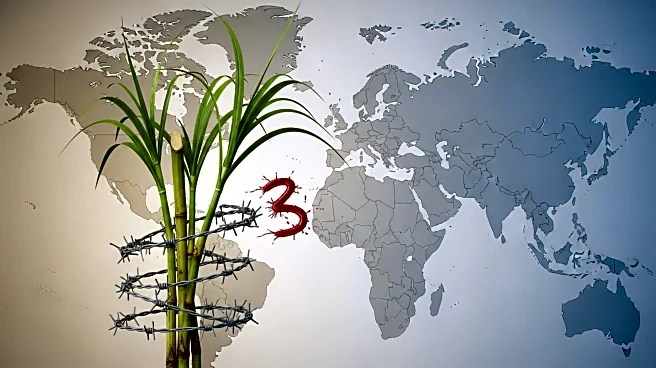What's Happening?
The European Union has announced a significant increase in tariffs on steel imports, raising them to 50 percent. This move is intended to match the tariffs imposed by the United States under President Trump's administration. The EU's decision aims to bring the U.S. to the negotiating table to potentially reduce these tariffs. The EU's tariff increase is seen as a strategic 'stepping stone' towards a more favorable trade agreement with the U.S. The EU's industry chief, Stéphane Séjourné, emphasized that the measures are in line with international trade laws and are designed to protect the European steel industry from cheaper imports, which are difficult to compete with due to high energy costs and stringent environmental regulations. The new tariffs are set to replace existing safeguards that are due to expire next June, pending approval from EU countries and the European Parliament.
Why It's Important?
The EU's decision to increase steel tariffs to 50 percent is a significant development in international trade relations, particularly between the EU and the U.S. This move highlights the ongoing trade tensions and the EU's efforts to protect its domestic industries while adhering to international trade laws. The increased tariffs could impact U.S. steel exports to the EU, potentially affecting American steel producers and related industries. The EU's strategy to use these tariffs as leverage in negotiations with the U.S. underscores the complex dynamics of global trade and the challenges of balancing protectionism with free trade principles. The outcome of these negotiations could have broader implications for international trade policies and economic relations between major global economies.
What's Next?
The EU plans to engage in negotiations with the U.S. to potentially reduce the current 50 percent tariffs on steel imports. These discussions will be crucial in determining the future of trade relations between the two economic powers. Additionally, the EU will inform the World Trade Organization of its new measures and hold talks with its significant steel suppliers. The outcome of these negotiations could lead to changes in trade policies and impact global steel markets. The EU's approach to protecting its industry while maintaining open markets will be closely watched by other countries facing similar trade challenges.
Beyond the Headlines
The EU's decision to increase steel tariffs reflects a broader shift in its trade policy, emphasizing the protection of domestic industries while maintaining compliance with international trade laws. This move could set a precedent for other regions facing similar trade pressures. The EU's strategy also highlights the challenges of balancing economic protectionism with the principles of free trade, particularly in the context of rising global trade tensions. The potential impact on U.S.-EU relations and the global steel market will be significant, as both regions navigate the complexities of international trade in a rapidly changing economic landscape.

